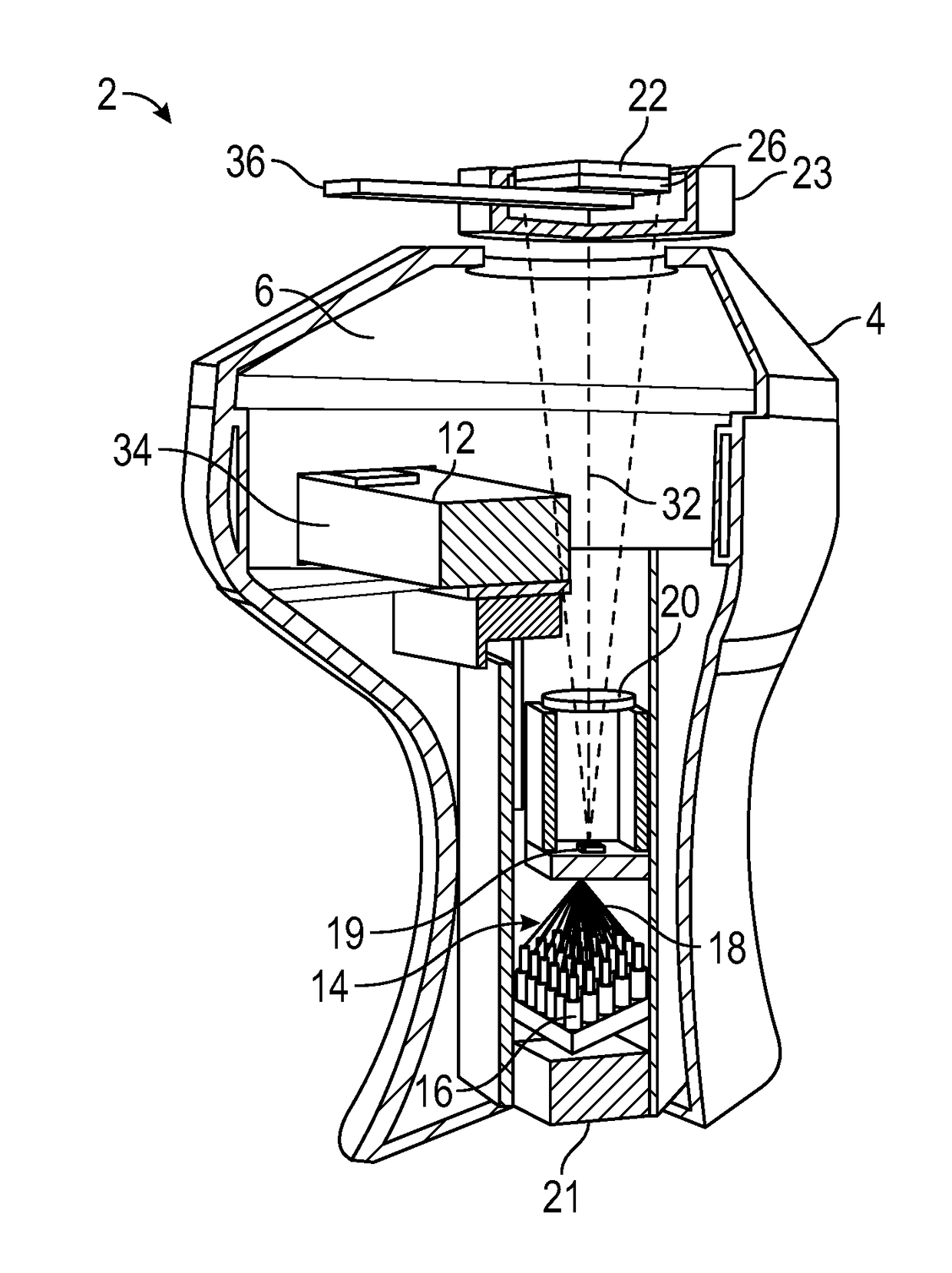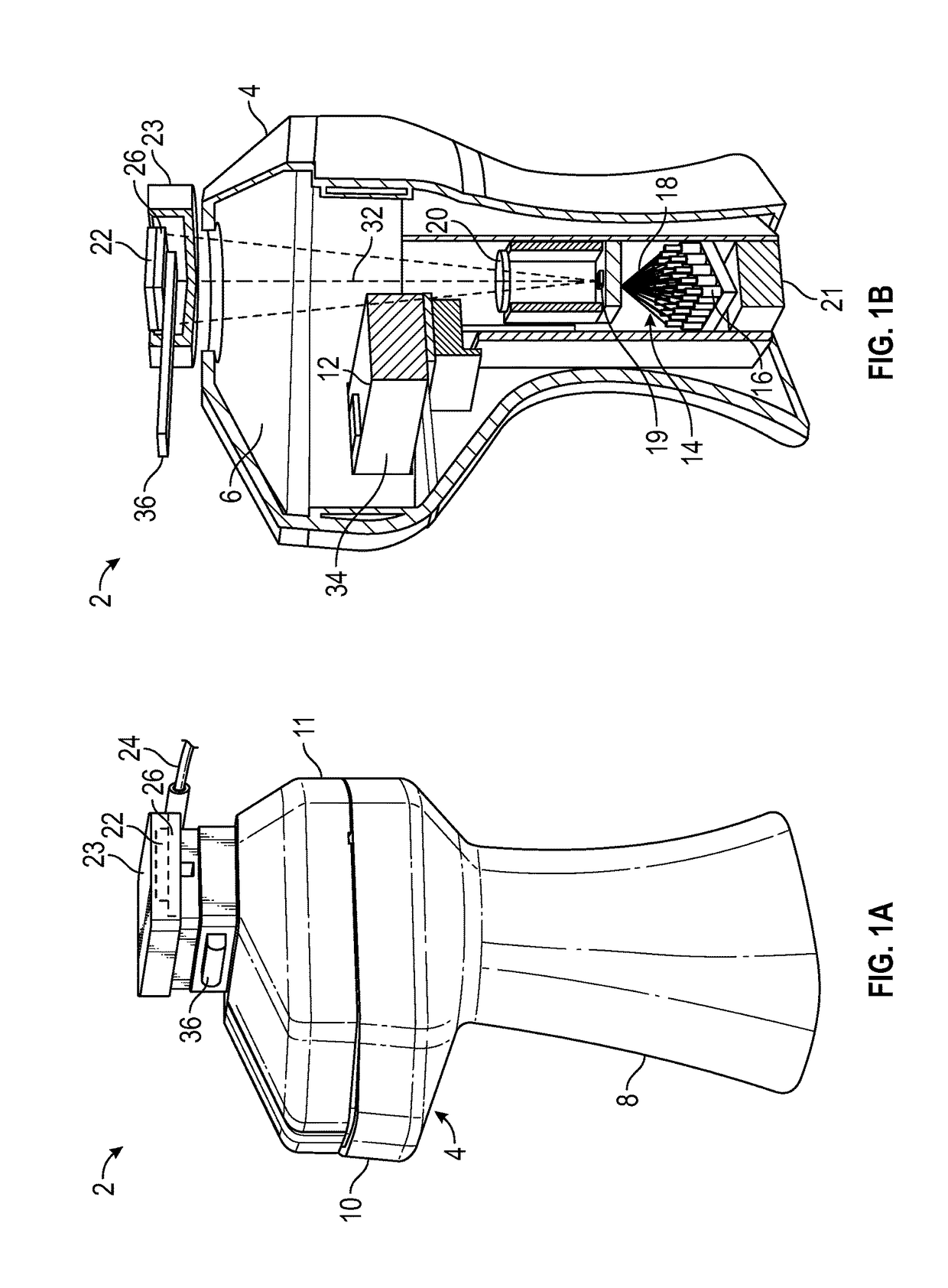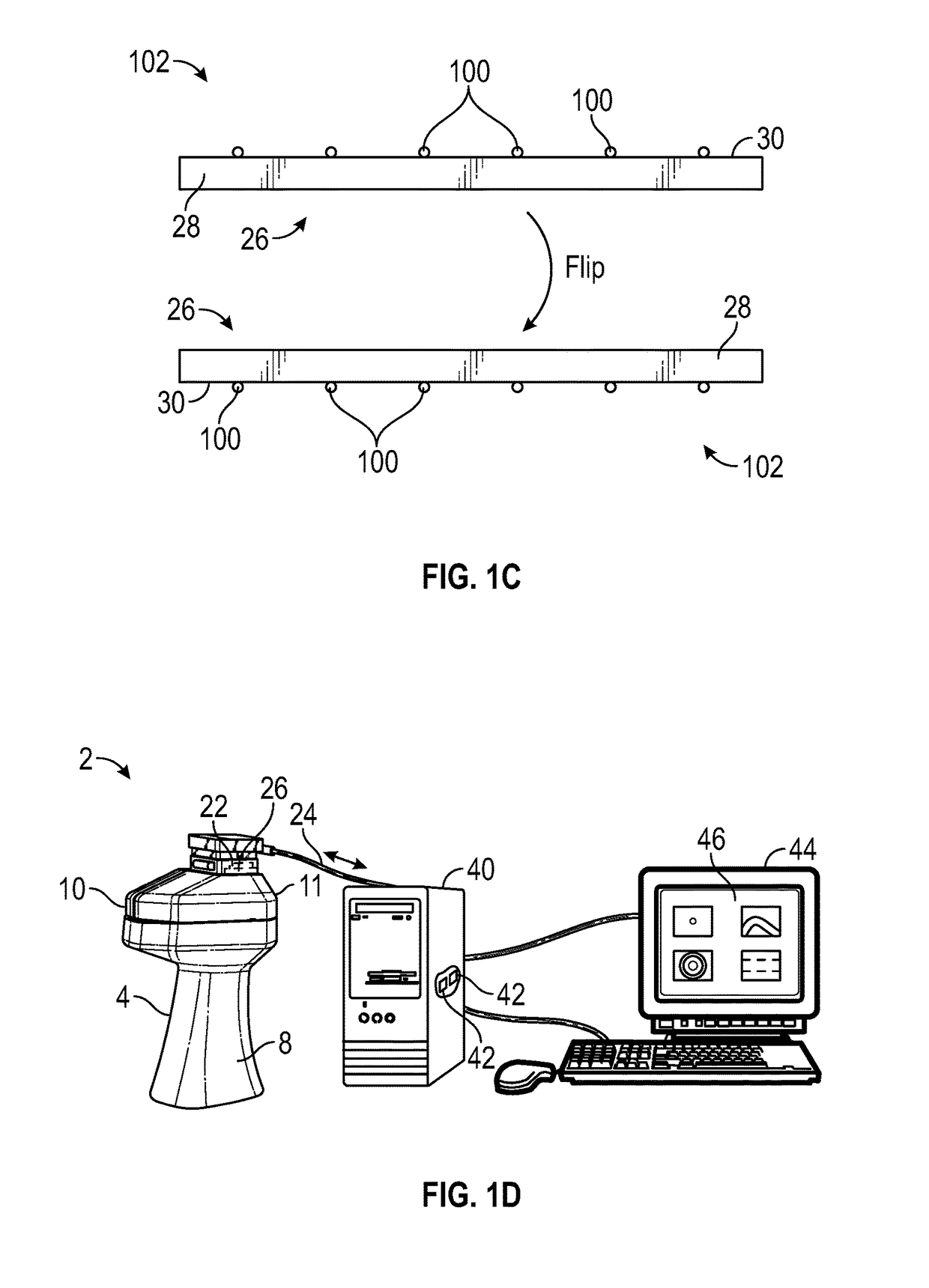Device and method for nanoparticle sizing based on time-resolved on-chip microscopy
a nanoparticle and microscopy technology, applied in the field of nanoparticles, can solve the problems of large capital investment, slow image acquisition, and inability to cover a large dynamic range of particle sizes and concentrations within a field-portable, cost-effective and rapid interfa
- Summary
- Abstract
- Description
- Claims
- Application Information
AI Technical Summary
Benefits of technology
Problems solved by technology
Method used
Image
Examples
Embodiment Construction
[0034]FIG. 1A illustrates a device 2 for the imaging and sizing of small objects 100 (FIG. 1C) within a sample. As described herein, the terms object or objects includes small sized objects such as particles that range from nanometer sized particles (e.g., those less than about 100 nm) up to larger sized particles (e.g., millimeter scale). The device 2 includes a housing 4 that includes an interior volume 6 (seen in FIG. 1B) therein that houses the various components of the device 2. The housing 4 is relatively small and is hand-held and portable. The housing 4 may include a grip portion 8 that is ergonomically designed so that the hand of the user can readily grip and hold the device 2. As illustrated in FIGS. 1A and 1B, an upper region 10 of the housing 4 above the grip portion extends outwardly. The upper region 10 of the housing 4 may be opened whereby the upper region 10 includes an upper cap 11 portion that can be removed from the lower portion which allows for the loading of ...
PUM
 Login to View More
Login to View More Abstract
Description
Claims
Application Information
 Login to View More
Login to View More - R&D
- Intellectual Property
- Life Sciences
- Materials
- Tech Scout
- Unparalleled Data Quality
- Higher Quality Content
- 60% Fewer Hallucinations
Browse by: Latest US Patents, China's latest patents, Technical Efficacy Thesaurus, Application Domain, Technology Topic, Popular Technical Reports.
© 2025 PatSnap. All rights reserved.Legal|Privacy policy|Modern Slavery Act Transparency Statement|Sitemap|About US| Contact US: help@patsnap.com



